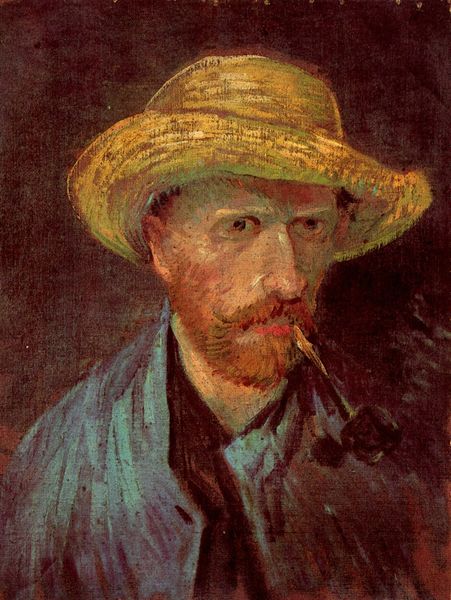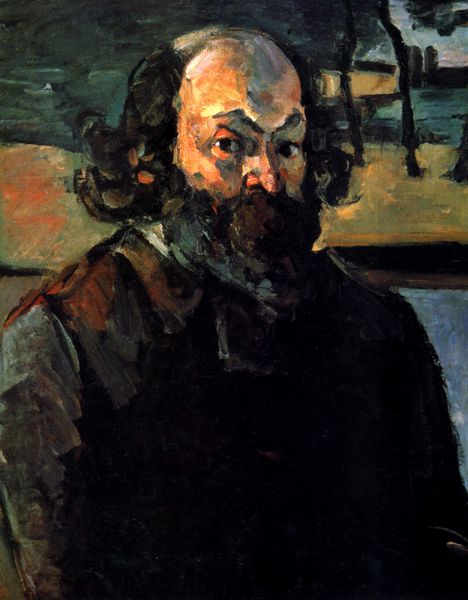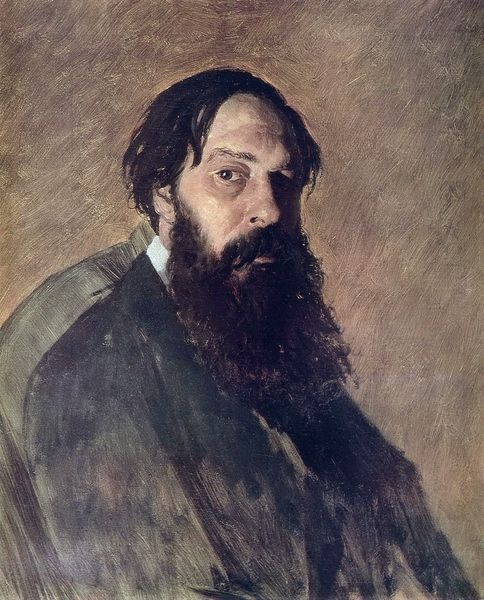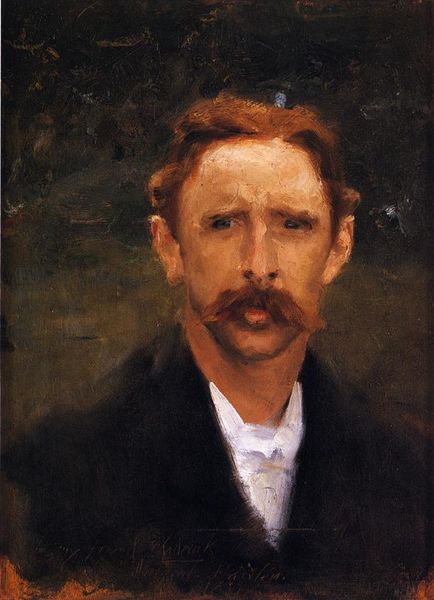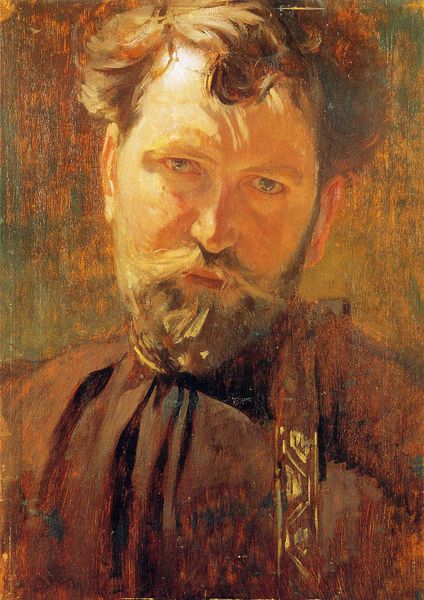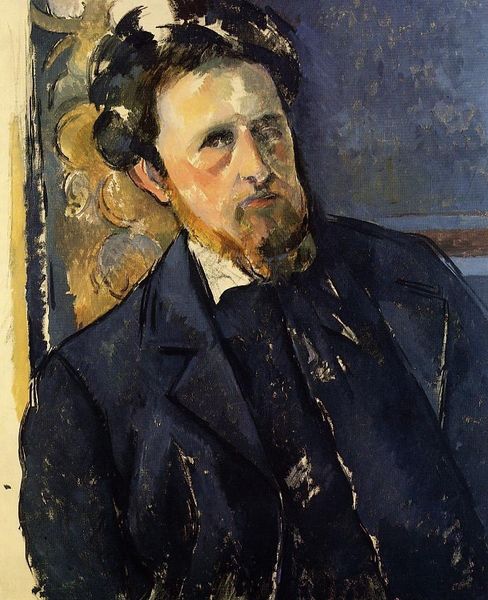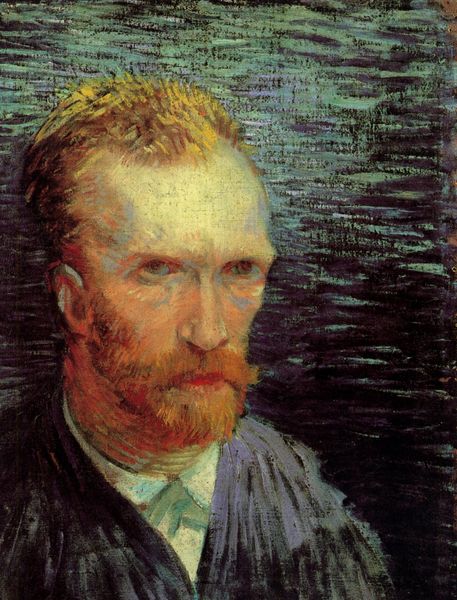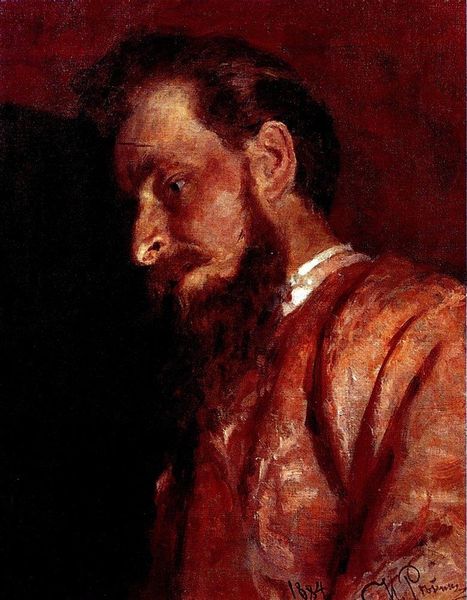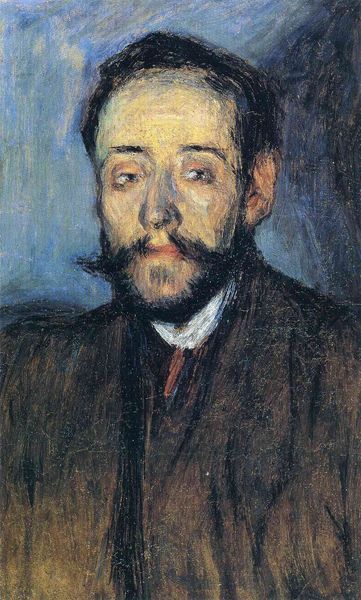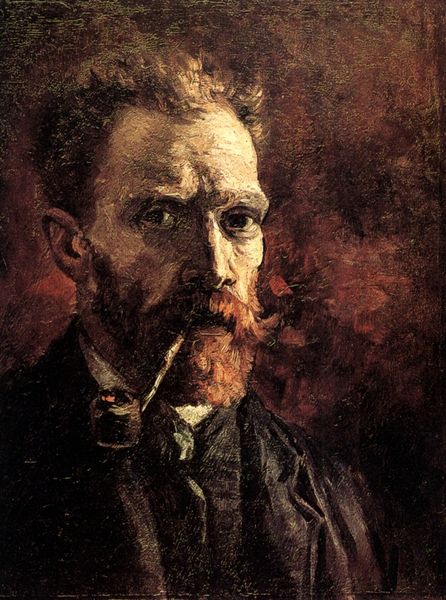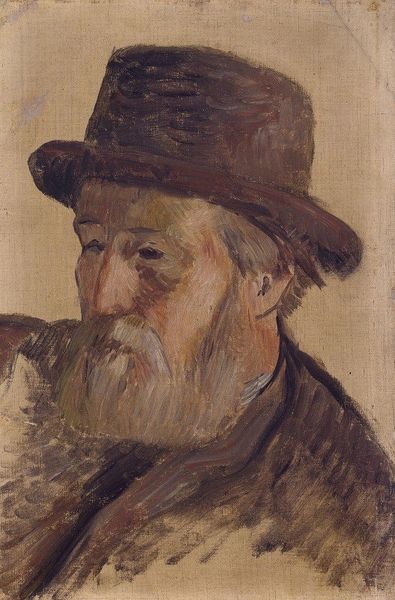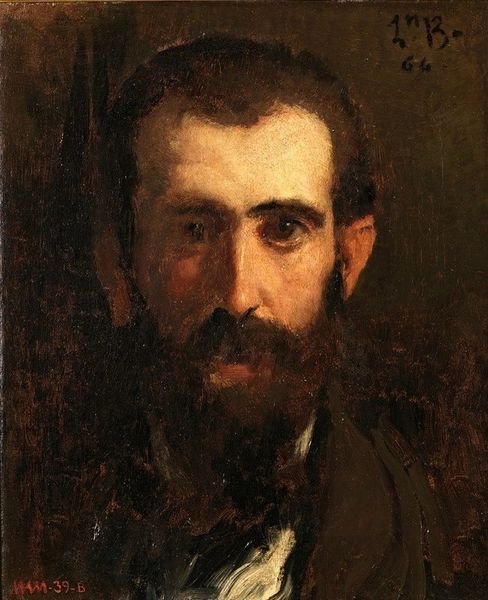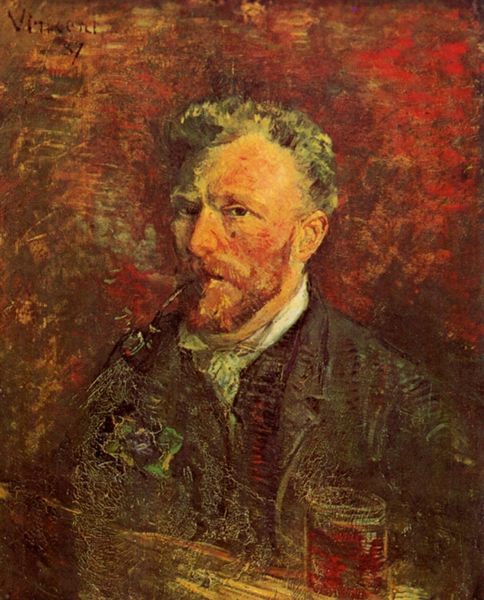
Dimensions: 51.75 x 31.75 cm
Copyright: Public domain
Curator: Whistler's "Portrait of Charles L. Freer," painted in 1903, always makes me stop. It has this…unfinished quality, almost like a memory glimpsed through a fog. Editor: My first thought: monochrome mastery. The way Whistler coaxed such depth out of primarily browns and golds—it's about texture, the materiality of oil paint. I mean, just look at that impasto! Curator: It really does glow, doesn’t it? Freer, the famous collector, seems to be captured mid-thought. His eyes are intense, as if he’s peering into some unseen future…maybe pondering his next acquisition. I like to imagine Whistler captured him in a fleeting, private moment. Editor: And capturing that meant Whistler chose specific materials, right? How does the grain of the canvas itself play into the surface? The brushstrokes aren't just aesthetic choices; they are physical acts of applying pigment. It’s labour frozen in time, a record of the studio. Were there assistants? How did Whistler source these specific oils? Curator: Well, that’s a fair point, it certainly lends weight to his artistic vision. But the painting isn't a photograph. It feels like an impression of Freer more than a perfect representation. Almost as if Whistler were asking, "What makes a person real? Is it their possessions, or is it something deeper?" Editor: Precisely, “something deeper” arising directly from how the artwork was wrought in the world. Take the frame: was it a bespoke creation, a collaborative process that involved artisans and impacted the presentation and value of the final piece? Did it become an industrially reproducible component, reflecting larger market trends and class-based access? Curator: You always bring it back to earth, don't you? And perhaps that’s necessary. Without an understanding of how materials function, of Whistler’s studio, perhaps it’s easy to drift off into some romantic notion of pure inspiration, disconnected from the grit of actually making something. Editor: The making is intrinsic to its very being. It shifts our focus from mere representation to how social practices such as craftmanship define what the artwork "means". Curator: Exactly. The conversation adds new facets. Well, this Freer portrait now feels both intimate and somehow historically distant. Editor: For me, it grounds it, allowing to look closer. A worthwhile collaboration.
Comments
No comments
Be the first to comment and join the conversation on the ultimate creative platform.
